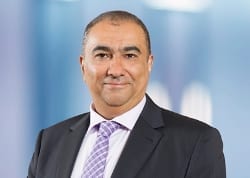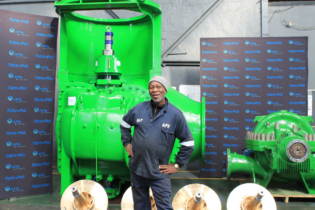The creation of an Infrastructure Codesa, similar to the Convention for a Democratic South Africa (Codesa), will keep the infrastructure development momentum going.
While South Africa is, this year, celebrating its hard-fought 20 years of democracy, it has also experienced a substantial increase in infrastructure projects, namely the construction of the Gautrain system, the Rea Vaya Rapid Bus Transit System in Gauteng, the world cup stadia across the country, the King Shaka International Airport in KwaZulu Natal, the Nelson Mandela Bridge in Johannesburg, De Hoop Dam in Limpopo and the Medupi and Kusile Power Stations that add power to the national grid and many more impressive infrastructure projects. However, PPC says that the momentum the country built up since obtaining independence seems to be stagnant, mainly due to the global economic crisis. The company believes that an Infrastructure Codesa could help relieve pressures on the industry and stimulate infrastructure development levels last seen in preparation for the 2010 World Cup. “It is clear that infrastructure bottlenecks by both the public and private sectors need to be addressed, not through agreeing to generic accords but through implementable plans with clear roles, responsibilities and deadlines. The methodology is simple. Before 1994, people wanted a democratic South Africa. The National Party and the ANC both raised issues that were preventing them from moving forward in this regard. So, they put together a working group on each of those issues and came back with solutions. All the things that we see today were compromises that emerged from discussions and negotiations,” says Ketso Gordhan, PPC’s CEO. Gordhan believes gathering the national government and private sector in one room could create a platform where many of the problems currently faced the industry are phased out. He is adamant that negotiations between the national government and the private sector would substantially increase the number of infrastructure developments completed. Gordhan believes there are various reasons why success has been experienced in the last 20 years. Firstly, it was due to a strong political will to get the job done. “If there is a strong political will to get something done, the chances of success are much higher. We saw that with the Gautrain project; it was because the MEC, Premier and the national government really wanted the project to get done,” he explained.Secondly, the existence of strong officials on projects was crucial. “They knew how to get the decisions through the various mechanisms in government; how to interact with the private sector; and how to get the best advice to make things to happen. A strong official makes a huge difference,” said Gordhan.
Nationally, the country is seeing a call for collaboration, which will boost infrastructure development. During his inauguration speech on 24 May 2014, President Jacob Zuma reiterated that the National Development Plan prioritises the national infrastructure development programme. “We will continue to build schools, railways, ports, universities, clinics, colleges, power stations, broadband, roads and more infrastructures around the country. This programme will continue to be the flagship of government,” said President Zuma. “The willingness of the private sector to engage with government around speeding up infrastructure delivery is very clear; there are many initiatives. The Business Leadership of South Africa has created a working group that is interacting with government. Everybody is very excited, it is clear everybody needs a new way infrastructure can be delivered,” said Gordhan.







